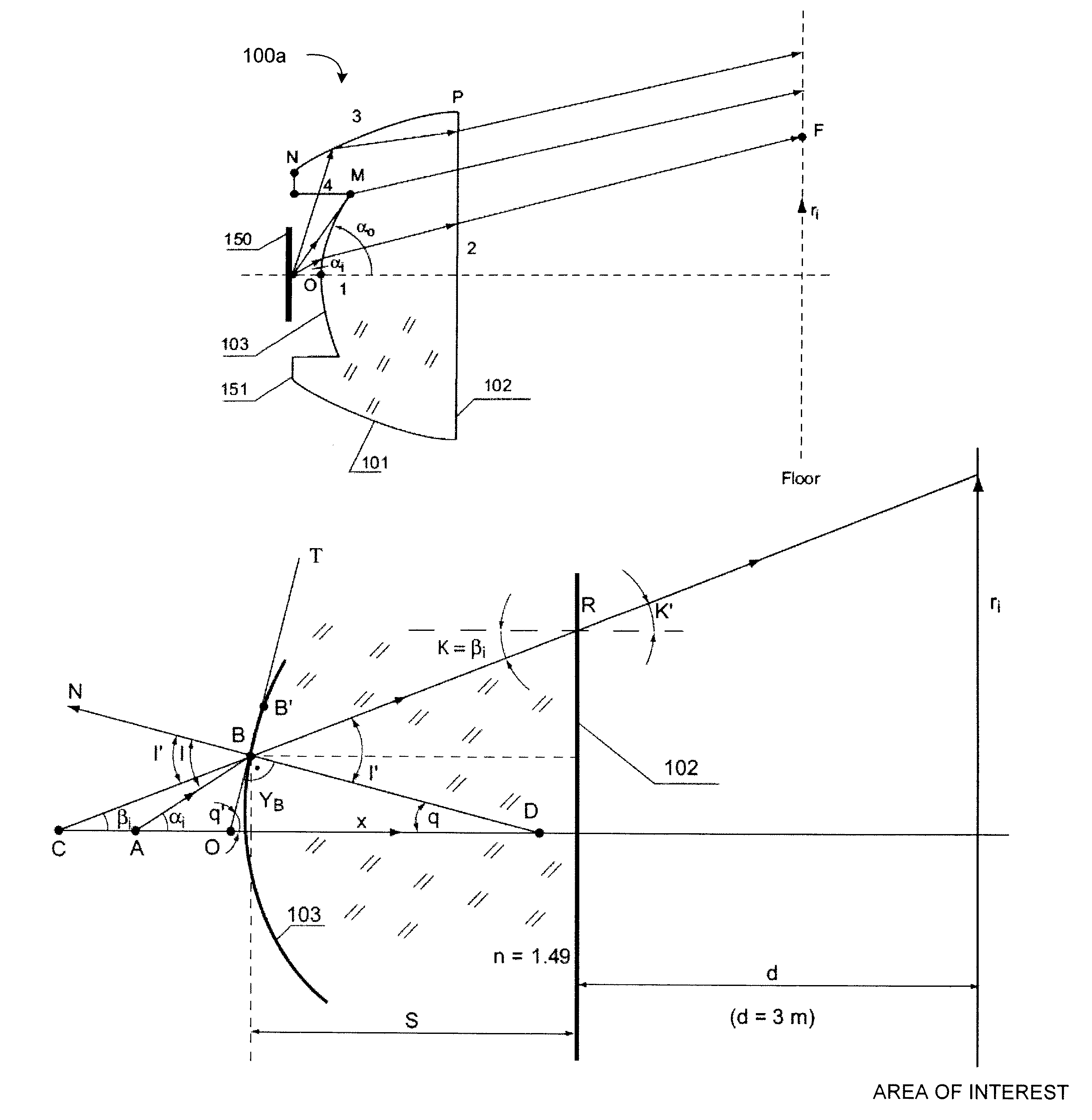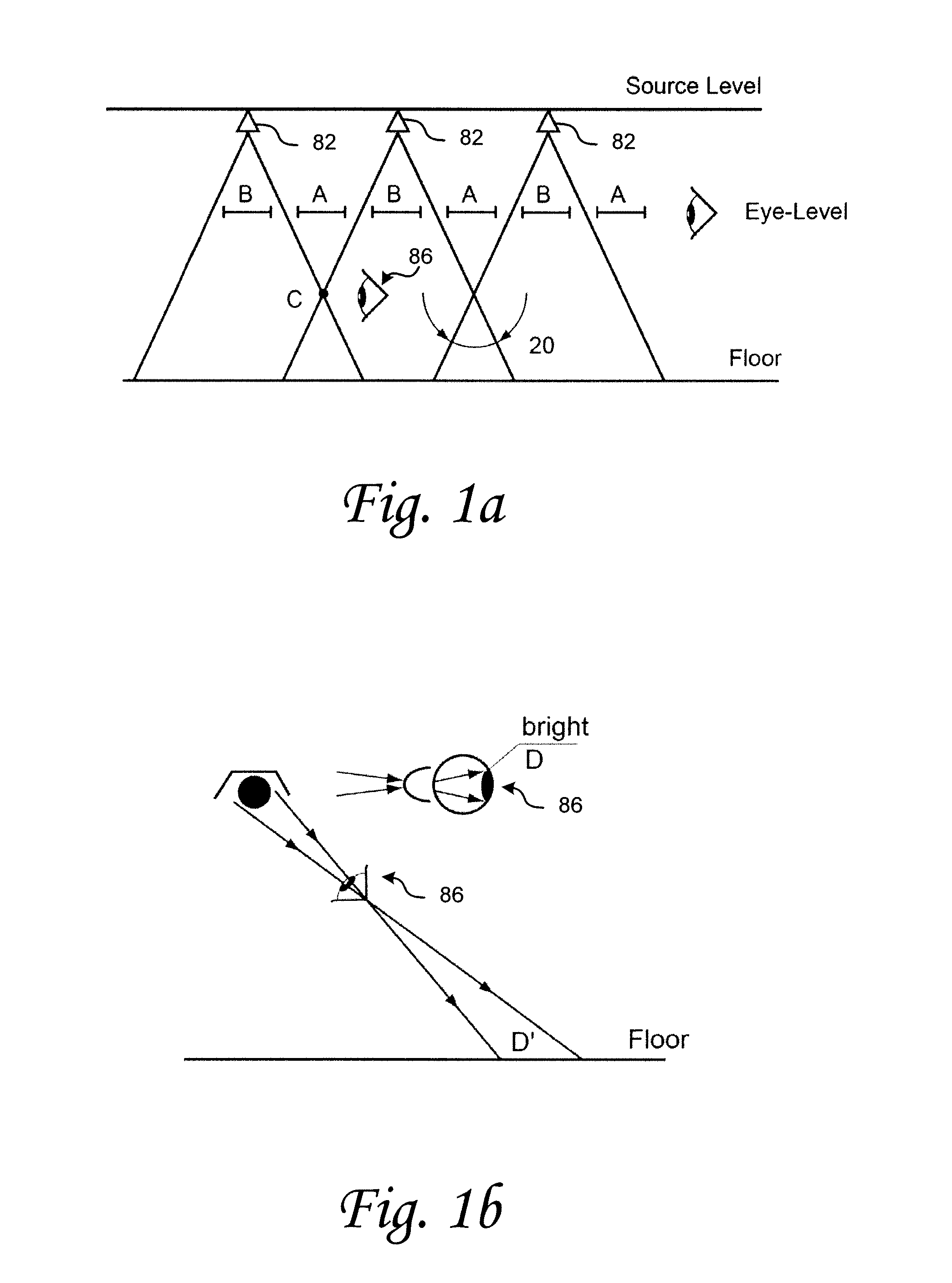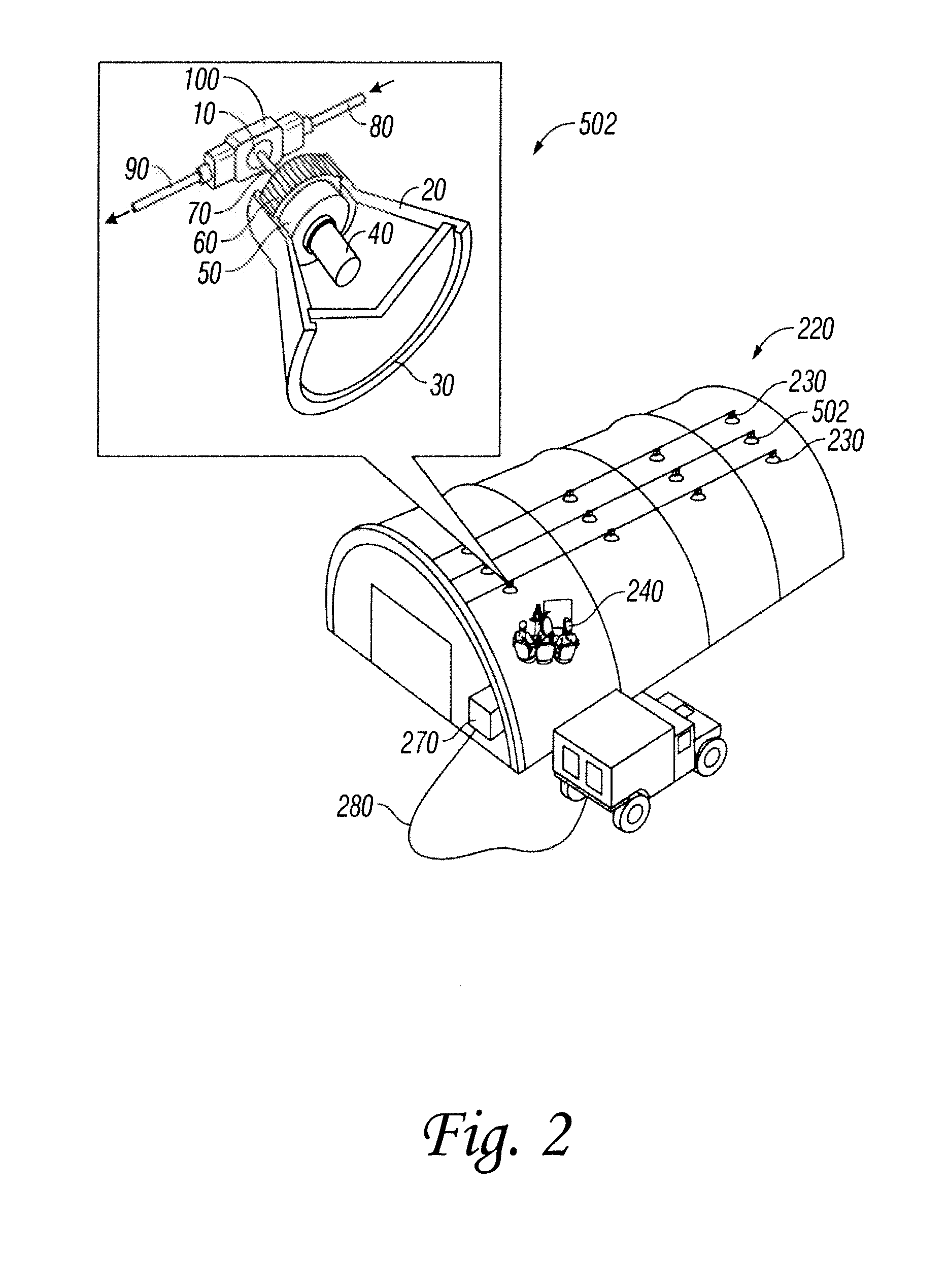Luminaire illumination system and method
a technology of illumination system and illumination source, applied in the field of led illumination, can solve the problems of not providing a source of bright illumination, unable to meet the needs of lighting, and bare wood can be difficult to keep lit, so as to reduce the thermal gradient, improve lighting quality, and reduce the thermal signature of lighting sources.
- Summary
- Abstract
- Description
- Claims
- Application Information
AI Technical Summary
Benefits of technology
Problems solved by technology
Method used
Image
Examples
fourth embodiment
[0148]In FIG. 13, the fourth embodiment is shown, where a number of LEDs, 108a, 108b, and 108c are mounted around a central rod 107, illuminating sideways ray illuminated from surface 113. The metallic reflector is a quasi-parabola of rotation around axis 115. Quasi-parabolas' axis 114 crosses the LED surface 113 (in a particular case, a quasi-parabola becomes off-axial parabola of rotation). In the illustrated example, the LED power supply 110 is mounted into an Edison connector 106. While the embodiments illustrated in FIGS. 10, 11, 12 and 14 utilize a material with a refractive index different from that of air to achieve reflection and refraction in accordance with Snell's law, the embodiment of FIG. 13 uses air surrounded by the metallic reflector 109. Also, the illustrated example includes a protective cover 116 such as glass, polycarbonate or other protective material.
first embodiment
[0149]FIG. 14 is a diagram illustrating still another example embodiment of an LED luminaire. Referring now to FIG. 14, this embodiment is similar to the first embodiment as shown in FIG. 10. However, in the example illustrated in FIG. 14, part of surface 101 near the source, is covered by a reflective coating 117 such as a metallic layer. The inclusion of a metallic coating 117 can facilitate internal reflection. For example, a metallic coating 117 can provide regular Fresnel reflection from the metallic interface instead of relying solely on total internal reflection as a result of the critical angle between the transformer 100e. With a reflective metallic coating 117, internal reflection is achieved without the same limitations imposed by Snell's law. Accordingly, reflective coatings 117 can be used to allow a more compact design. With the example illustrated in FIG. 14, the reflective coating 117 is provided near the light source as this is the area of the beam transformer 100e ...
PUM
 Login to View More
Login to View More Abstract
Description
Claims
Application Information
 Login to View More
Login to View More - R&D
- Intellectual Property
- Life Sciences
- Materials
- Tech Scout
- Unparalleled Data Quality
- Higher Quality Content
- 60% Fewer Hallucinations
Browse by: Latest US Patents, China's latest patents, Technical Efficacy Thesaurus, Application Domain, Technology Topic, Popular Technical Reports.
© 2025 PatSnap. All rights reserved.Legal|Privacy policy|Modern Slavery Act Transparency Statement|Sitemap|About US| Contact US: help@patsnap.com



